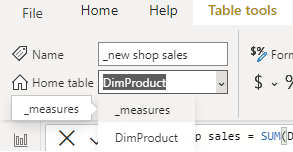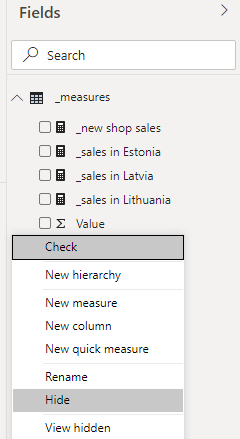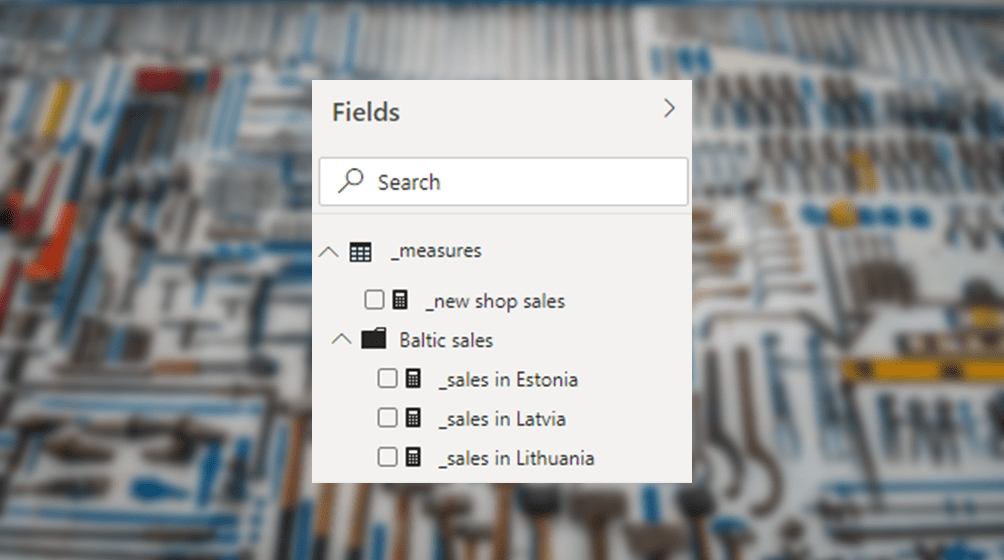Here are my favorite ways to organize DAX measures in Power BI that can save plenty of your time in larger projects.
1. Choose good Power BI measure naming conventions
The Power BI field list is in alphabetical order for everything. Right now, it is not possible to organize those field list elements in a custom order. The best you can do is hide unnecessary information and choose naming that goes along with these Power BI rules.
If you choose good naming conventions, it is easier for you to use and find measures. That can be true even if they are not in special tables or folders. If you will use the first of the following rules, start typing with the underscore, and you will see a list of all available measures.

Few Power BI measure naming convention rules:
- Keep the alphabetical order in mind. For example, start the measure name with an underscore. That will place it at the beginning of the column name list.
- Choose good, user-friendly, descriptive naming for your measures. It is good if you can find them or understand them even only by name.
- There might be your preferences in the DAX measure naming conventions, but whatever you choose to do – be consistent.
2. Use a dedicated measure table to organize measures in Power BI
An important property for every measure in Power BI is Home Table. By knowing that, you can create an empty table that is used only for measures.
Keep in mind that you can use some of the naming convention principles for the table name.
1. Go to the Power BI modeling tab and choose New Table.
2. You can create it empty by using table construction principles like this.
_measures = {0}
The table is with a single empty column.
3. Change the Home Table property for an existing measure or create new measures in this table directly.

4. After there are one or more measures in the table of measures, you can hide the empty column.

3. Use the folders to organize measures in Power BI
In the model view, you can create a folder that is useful to group measures.
1. Go to the Power BI model view and choose the table of measures.
2. Select the measures you want to place in the same group and give a good name to the folder.

Now you can enjoy the result. The imperfection is that you can manage display folder content only in model view.

4. Avoid unnecessary Power BI measures
Why organize something that is sometimes not necessary? Maybe this should be tip number one. Even if all the measures seem valid, consider using variables to avoid those that are not needed directly.
I like to use all methods together. That will cover all situations where it is important how you organize measures in Power BI.
If you are also an experienced Excel user and relatively new to Power BI and DAX, take a look at this post. The difference between DAX and Excel functions looks the same.

Leave a Reply